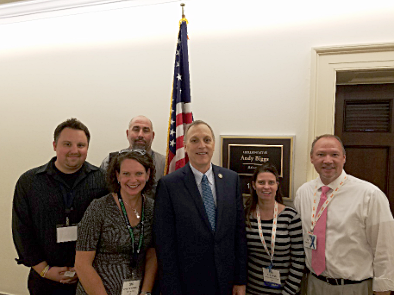Wallowing in Pain
/By David Hanscom, MD, PNN Columnist
One of the most powerful ways to bond with others is by sharing emotional or physically painful experiences. It is common for people suffering from chronic pain to discuss it with their family, friends and colleagues.
Between searching for a cure and talking about it, a fair amount of their consciousness is focused on pain. But the unconscious brain, which pain is a part of, is much more powerful than the conscious brain. You can’t consciously fix or control it. But you can direct it. Your brain changes every second and will develop wherever you place your attention. The more you focus on your pain, the more you will reinforce it.
Many of us in the medical profession were trained to have our pain patients keep a diary of the pain. But it has now been shown in some studies (here and here) that a pain diary is often associated with a delay in recovery. Focusing on the pain and documenting it may only reinforce pain circuits.
One of the most powerful strategies we have seen in treating pain is when we don’t allow patients to discuss their pain with anyone – expect with medical providers. People can become so wrapped up in their pain that they lose themselves in it. They become their pain.
I had no idea how much time patients spent discussing their pain until I asked them not to. For some, it felt like I had just dumped a bucket of ice water over their head.
They’ll say, “I feel shallow and phony by not sharing what is really going on with me.” That is a sure sign that he or she has become their pain.
We have witnessed several things occur when people successfully stop discussing their pain. The pain may not immediately abate, but they feel lighter.
For starters, do you really think your pain is that interesting to those who aren’t in pain? There is nothing that they can do about it and although they may sympathize, it is incredibly frustrating to repeatedly hear the same story. Often my patients don’t appreciate the effect their story has on others. People that they enjoyed in the past drift away, furthering their social isolation.
And what about your poor family? They can’t escape as easily. Instead of you being a source of inspiration, peace, love and joy, you bring the whole house down. It isn’t a psychological issue. The effect occurs through mirror neurons, where you are stimulating the negative parts of the brains of those close to you.
Bonding with Pain
Another harmful aspect of repeatedly discussing your pain is that you will bond with those who are also focused on their pain. The bonds are deep and real and stronger than many human connections.
One extreme example of the strength of the need for social interaction involved a patient who we discovered was being violently abused by her boyfriend. We had to call the authorities. But she kept going back to him. One of my staff finally asked her why she put up with being beat up so badly. Her reply was, “It’s the only time that I have his full attention.”
You’ll be almost guaranteed to remain in pain if you are also contributing to another person’s suffering. One of the most basic parts of being human is giving back and that energy is almost impossible to connect to while you are in the abyss of pain. You are taking from those around you and not giving back.
Even deeper though is that the bond forged by pain is so strong that many don’t want to give up their pain. It’s the one greatest obstacle to healing. Being in a victim mode, in any realm, is so powerful that no one willingly wants to let it go. I run across this resistance multiple times per week. It took me many years before I realized that some patients had become addicted to being in pain and were resistant to change. If a patient doesn’t want to even learn the basic concepts behind solving chronic pain, there is nothing that I can do for them.
Our team has attempted to work with several online pain groups, where a lot of energy is spent on complaining about pain, circumstances and medical care. The complaints are generally legitimate, but little time is spent on discussing real alternatives. When we have suggested that there is a viable solution, we are quickly and consistently blocked.
We’ve also asked our patients to never complain or engage in pain behavior, such as groaning, grabbing their back, etc. If you are having a bad day at work or dealing with an unpleasant aspect of your pain, why bring it home? It is supposed to be your haven of safety and relaxation.
Don’t Share Your Pain
We have been surprised how difficult it’s been for some people to quit complaining. It’s also been surprising how effective this simple strategy has been in moving people forward on their healing journey. At a minimum, their family is happier and everyone’s mood improves. It’s a great start.
Last week I had five different patients become free of pain. All of them had been suffering badly for many years and the change occurred within a couple of months. One person dramatically improved within a couple of weeks. All were beside themselves trying to express how excited and happy they were to be free of pain. Not discussing their pain was a significant step for each of them.
If you are one who feels like that you have to share your pain, then be honest with yourself about not wanting to give it up. It will save you and everyone else a lot of time and money not making the effort to help you heal when you actually don’t want to. Not sharing your pain is a simple beginning and will give you insight on where you are at with regards to healing.
Many people are incensed at the idea that they don’t want to give up their pain. The response is often that the medical profession just isn’t doing its job and fixing them. Whether that is true or not isn’t the point. The key is that you aren’t willing to learn the most recent concepts about overcoming pain. There isn’t any risk and you are already spending a good deal of time searching for an answer.
If you really think you aren’t attached to your suffering, then try this simple test: Don’t talk about your pain.
Dr. David Hanscom is a spinal surgeon who has helped hundreds of back pain sufferers by teaching them how to calm their central nervous systems without the use of drugs or surgery. In his book Back in Control, Hanscom shares the latest developments in neuroscience research and his own personal history with pain.
More information can be found on his website.
The information in this column should not be considered as professional medical advice, diagnosis or treatment. It is for informational purposes only and represents the author’s opinions alone. It does not inherently express or reflect the views, opinions and/or positions of Pain News Network.


































